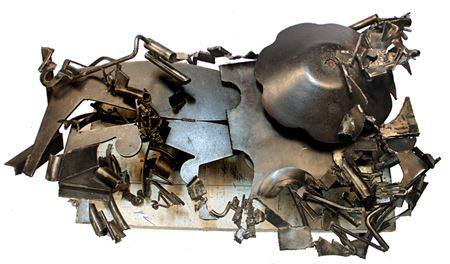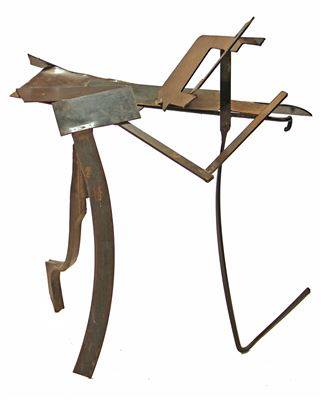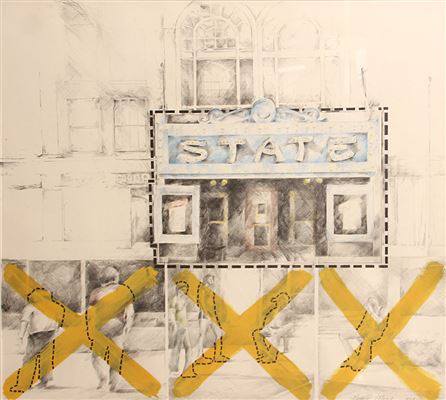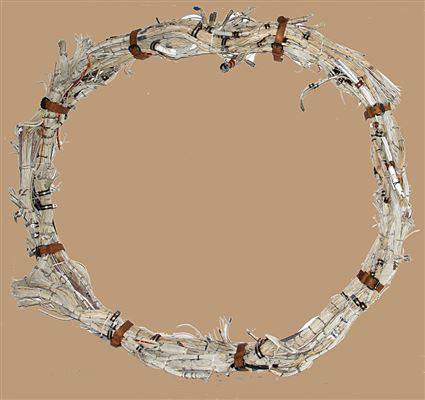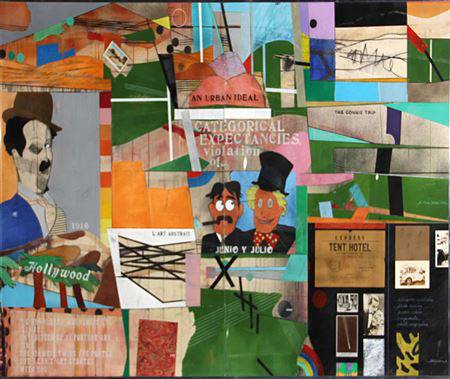
Title:Brochure: A Romance (for Miss Connie Bates)…,
Artist: Richard Marshall Merkin
47.75″ x 71.75″
(121.29cm x 182.25cm)
Created: 1969
Mixed Media/Paper on board
Signed and Dated
Farhat Art Museum Collection
Richard Marshall Merkin (1938 – 2009)RICHARD MERKIN
RISD Connection: MFA in Painting, 1963; Professor Emeritus, Department of Painting; taught at RISD 1963-2005
About the artist: Merging his role as flaneur (connoisseur of city life) with his role as painter and social historian, Richard Merkin retrieves lost cultural artifacts – a Turkish cigarette, a gangster, a bowler and generally “things most people don’t know about” – and reconstitutes their Jazz Age virtues on canvas in cubist, comic-laced landscapes of tropical color.
Road to RISD: Often described as Rhode Island’s most famous New York artist, Merkin followed a post-undergrad stint as a guard at the Museum of Modern Art with a year at Michigan State, then a full graduate scholarship to RISD. He accepted a teaching fellowship at RISD the year he graduated, in part because he was intent on building his reputation outside of New York. Two years later, after a solo show in Boston, he settled in New York and continued his love affair with Rhode Island and RISD for over 40 years via a weekly teaching commute.

Richard Marshall Merkin (1938 – 2009).
Other Roles: Novelist and best friend Tom Wolfe shares Merkin’s fashion fanaticism and also admires his anecdotal aplomb – “somehow it is always Havana con mucho color and thrombotic marimbas in a room full of Merkin’s work.” The artist himself prefers to be considered a “literary painter,” perhaps because his cartoonish canvases are often short stories in themselves, praising “the pioneers, the people from the past who paved the way,” such as a Miami Beach comedienne or a Moroccan photographer. Merkin is also a contributing writer for GQ and Vanity Fair, and his paintings have appeared in The New Yorker and Harper’s Magazine. They are featured in collections at the Whitney Museum of American Art, the Museum of Modern Art and the Smithsonian Institution.
Discoveries: (1) “Inventing yourself is a very American thing to do.” (2) He rarely works from life, but often from travel brochures. (3) “There is a degree of creative violence to my dress. I was not to the manner born, so to simply appropriate the manner would not have been satisfactory.”
Education
Syracuse University, BFA, 1961
Rhode Island School of Design, MFA, Painting, 1963″
Source:
Rhode Island School of Design alumni biography section
